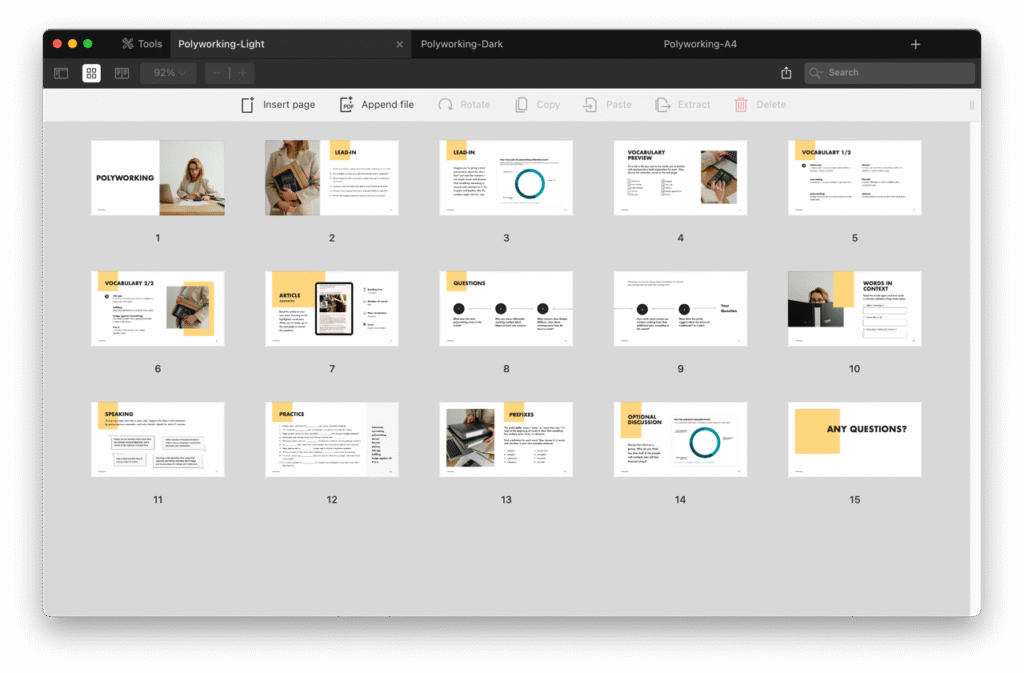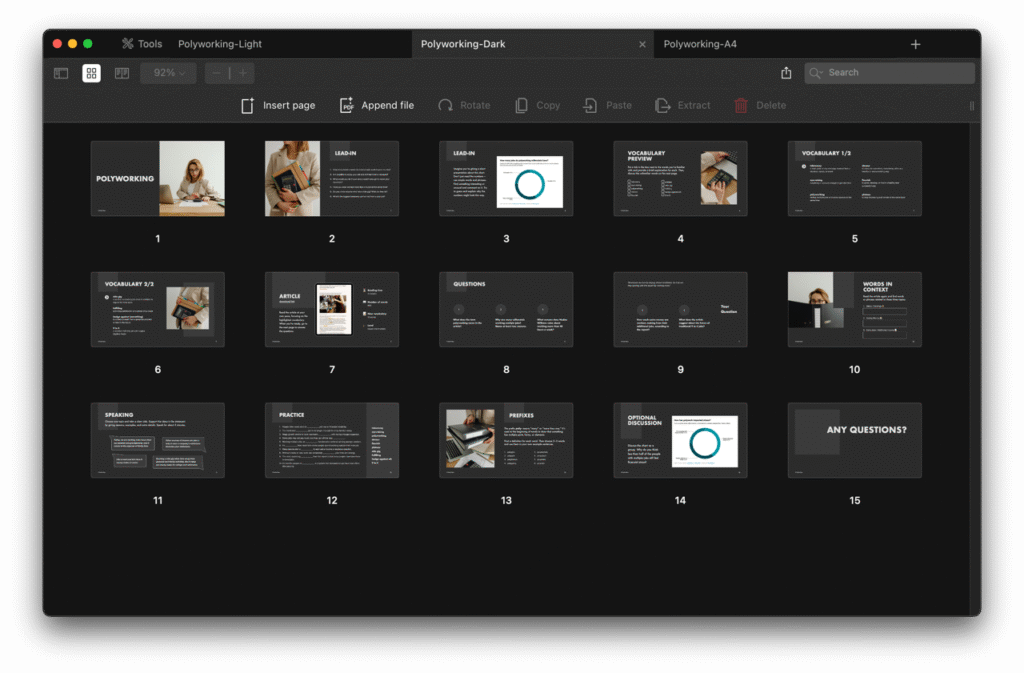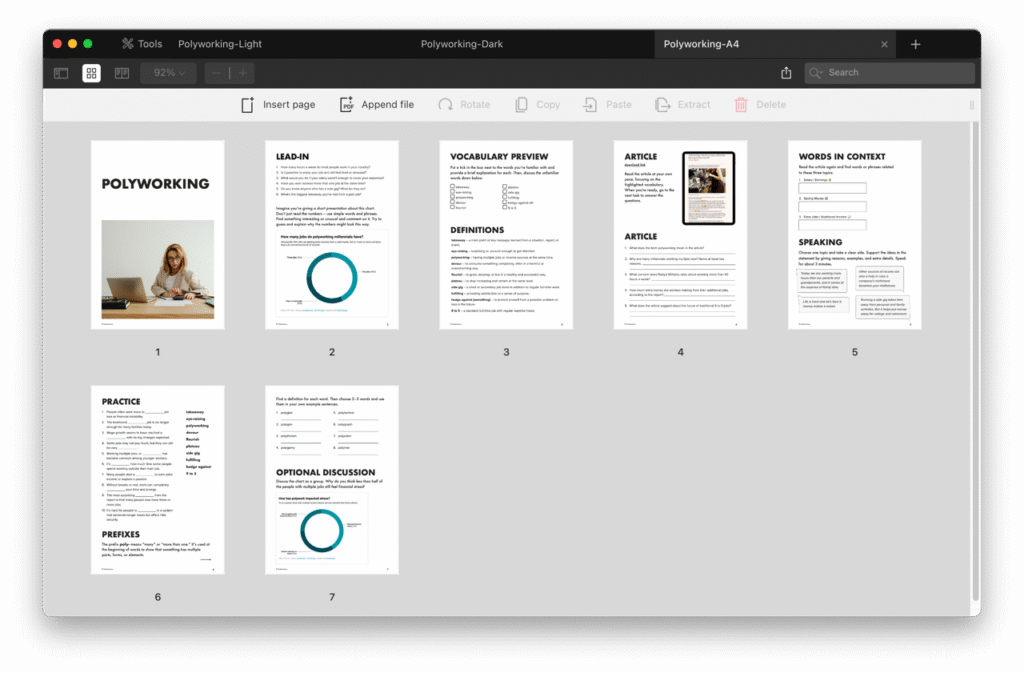Polyworking

This B2 lesson explores the growing trend of polyworking through a thought-provoking article packed with real data and social commentary. Students will analyze why more people are juggling multiple jobs and whether it’s a choice or a necessity. The lesson focuses on rich vocabulary like hedge against, side gig, and plateau, and encourages critical thinking through chart interpretation and discussion. Tasks are designed to push students beyond surface reading — they’ll express opinions, support ideas with examples, and practice useful speaking structures. It’s a great fit for learners interested in money, modern work culture, and real-life challenges.
| Level | Vocabulary | Reading time | Lesson time |
| B2 / Upper-Intermediate | 10 words | 660 words / 4 min | 60 min |



Vocabulary
- takeaway
- eye-raising
- polyworking
- devour
- flourish
- plateau
- side gig
- fulfilling
- hedge against sth
- 9 to 5
Contents
- Lead-in
- Chart
- Vocabulary preview
- Definitions
- Article
- Comprehension
- Words in context
- Speaking
- Practice
- Prefixes
- Optional discussion
Lead-in, Chart
This upper-intermediate lesson begins with six discussion questions designed to activate prior knowledge and spark conversation around work culture. Students reflect on how many hours people typically work in their country, whether it’s possible to enjoy your job while still feeling stressed, and if having a side gig is common. These questions naturally lead into the topic of polyworking. On the next page, students examine a chart. Rather than reading the numbers, they’re encouraged to describe the data in simple, natural language—e.g., using phrases like “about a quarter” instead of “24%”. The task can be extended into a short group presentation where learners summarize key trends and offer their own interpretations.
Vocabulary preview, Definitions
The vocabulary preview introduces 10 key words from the article. Start by quickly checking which words students already know, so you can focus more deeply on the unfamiliar ones. Encourage learners to discuss meanings, offer synonyms, and use them in short sentences. Definitions are provided later in the lesson, so you can refer to those if needed. This stage is flexible—you can adjust the pacing depending on your learners’ needs.
Article, Comprehension, Words in context
Once students are comfortable with the vocabulary, they move on to the main reading. This article takes around four minutes to read and offers real-world insight into why so many millennials are working more than one job. Let students read at their own pace, focusing on key ideas rather than rushing. After reading, there are five comprehension questions to check understanding. Then, students return to the article to find vocabulary related to three themes: salary, saving money, and additional jobs. This scanning task can take some time, so encourage students to work in pairs or small groups if needed.
Speaking
The speaking task includes four powerful statements taken directly from the article. Students choose one, take a clear stance, and speak for around three minutes, backing up their opinion with reasons, examples, and personal insight. Encourage them to avoid sitting on the fence—this is a good chance to practice persuasive speaking. Consider giving students time to jot down their thoughts before they speak to help them organize their ideas.
Practice, Prefixes
The practice page focuses on vocabulary from the lesson in a fill-in-the-gap format. You can use this for individual work, pair work, or as a whole-class activity depending on your usual teaching style. The next section introduces the prefix poly-, which means “many” or “more than one.” Students explore related words like polygon, polyglot, and polytheism. This can be turned into a group activity—ask students to guess meanings, match definitions, and make example sentences. It’s a great opportunity to build awareness of word formation and boost confidence with unfamiliar vocabulary.
Optional discussion
As a final (optional) task, there’s an extra chart that ties back to the article theme. It shows the connection between multiple jobs and stress levels. This can be used for follow-up discussion or assigned as homework. It encourages students to reflect critically on the long-term effects of polyworking and opens space for thoughtful class debate.



